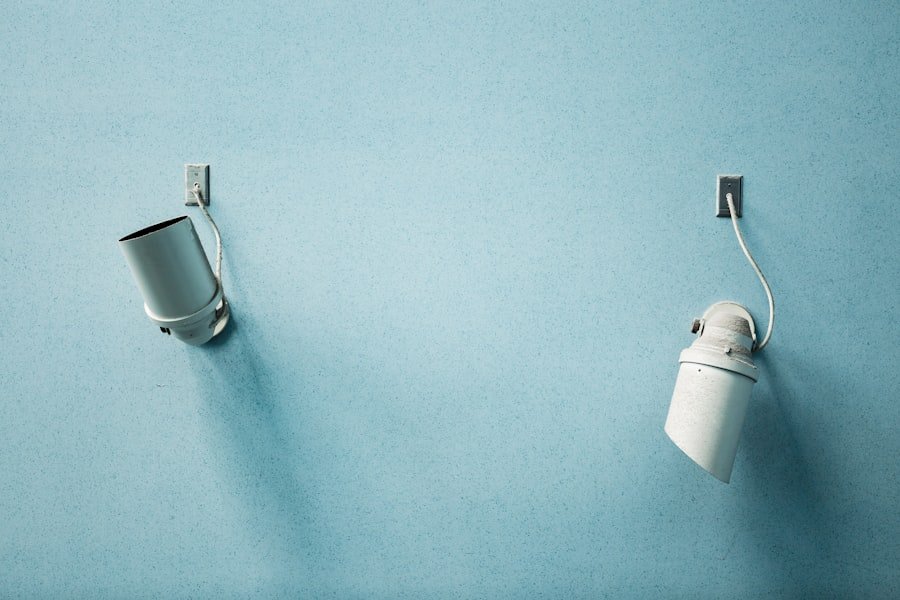The practice of double cleansing can be traced back to ancient Japan, where beauty rituals were deeply intertwined with cultural traditions and daily life. Historical records suggest that Japanese women, particularly those in the Heian period (794-1185), placed a high value on their appearance, often using a variety of natural ingredients to maintain their skin’s health and radiance. This era was characterized by a burgeoning appreciation for aesthetics, leading to the development of sophisticated beauty regimens that included meticulous cleansing practices.
The concept of double cleansing emerged as a response to the need for thorough skin purification, especially in a society where environmental factors such as dust and pollution were prevalent. In these early days, the cleansing process was not merely about removing dirt; it was a holistic approach to skincare that emphasized the importance of both physical and spiritual cleanliness. The use of natural oils, such as camellia oil, was common among noblewomen who sought to remove makeup and impurities while nourishing their skin.
This foundational practice laid the groundwork for what would evolve into the modern double cleansing method, which combines an oil-based cleanser with a water-based one. The dual approach reflects a deep understanding of skin physiology and the necessity of addressing both oil-soluble and water-soluble impurities.
Key Takeaways
- Double cleansing originated in ancient Japan as a way to remove heavy makeup and impurities from the skin.
- Traditional Japanese skincare emphasizes gentle and natural ingredients to maintain healthy and clear skin.
- Oil cleansing is a crucial step in Japanese beauty rituals, as it effectively removes makeup and excess sebum without stripping the skin.
- Water-based cleansers are used after oil cleansing to further purify the skin and remove any remaining impurities.
- Double cleansing promotes healthy and clear skin by thoroughly removing dirt, oil, and makeup while maintaining the skin’s natural balance.
Understanding the Traditional Japanese Approach to Skincare
The traditional Japanese approach to skincare is rooted in simplicity and respect for natural ingredients. Rather than relying on an extensive array of products, Japanese beauty rituals often focus on a few key elements that work synergistically to promote healthy skin. This philosophy is encapsulated in the concept of “less is more,” where the emphasis is placed on quality over quantity.
The traditional regimen typically includes cleansing, toning, moisturizing, and sun protection, with each step designed to enhance the skin’s natural beauty rather than mask imperfections. Central to this approach is the belief that skincare should be a mindful practice, one that encourages individuals to connect with their bodies and the environment. Rituals are often performed with intention, allowing for a moment of self-care in an otherwise hectic world.
For instance, the act of cleansing is not just about removing makeup or dirt; it is also an opportunity for reflection and relaxation. This mindfulness extends to the selection of products, with many opting for formulations that incorporate traditional ingredients known for their beneficial properties, such as rice bran, green tea, and seaweed.
The Importance of Oil Cleansing in Japanese Beauty Rituals

Oil cleansing serves as the cornerstone of the double cleansing method in Japanese skincare. The rationale behind this technique lies in the unique properties of oils, which are adept at dissolving makeup, sebum, and other oil-based impurities that accumulate on the skin’s surface throughout the day. In Japan, this practice is often initiated with a gentle oil cleanser that is massaged into dry skin, allowing it to effectively break down stubborn products like waterproof mascara and heavy foundations.
One of the most revered oils used in this process is camellia oil, prized for its lightweight texture and rich fatty acid content. This oil not only cleanses but also hydrates and nourishes the skin, making it an ideal choice for those seeking a balance between effective cleansing and moisture retention. Additionally, other oils such as jojoba and sunflower oil are commonly used due to their non-comedogenic properties, ensuring that pores remain clear while providing essential nutrients.
The ritualistic application of oil cleansers also promotes circulation and relaxation, enhancing the overall experience of skincare.
The Role of Water-Based Cleansers in Japanese Skincare
Following the oil cleansing step, a water-based cleanser is employed to remove any remaining residue and provide a thorough cleanse. This second step is crucial in ensuring that the skin is free from both oil-based impurities and water-soluble debris such as sweat and environmental pollutants. Water-based cleansers in Japan often come in various forms, including foams, gels, and creams, each designed to cater to different skin types and preferences.
The formulation of these cleansers typically emphasizes gentle yet effective ingredients that do not strip the skin of its natural moisture barrier. Many water-based cleansers incorporate botanical extracts like green tea or rice bran, which are known for their antioxidant properties and ability to soothe inflammation. The use of such ingredients reflects a broader understanding of skincare that prioritizes not only cleanliness but also skin health.
By combining oil and water-based cleansers, individuals can achieve a comprehensive cleanse that prepares the skin for subsequent treatments like serums and moisturizers.
How Double Cleansing Promotes Healthy and Clear Skin
Double cleansing has gained popularity not only for its thoroughness but also for its ability to promote healthy and clear skin. By effectively removing impurities from both the surface and deeper layers of the skin, this method helps prevent issues such as clogged pores, breakouts, and dullness. The initial oil cleanse ensures that makeup and excess sebum are dissolved, while the subsequent water-based cleanse removes any lingering residue, leaving the skin feeling refreshed and revitalized.
Moreover, double cleansing can enhance the efficacy of other skincare products applied afterward. When the skin is clean and free from barriers, serums and moisturizers can penetrate more deeply, allowing active ingredients to work more effectively. This can lead to improved hydration levels, increased radiance, and an overall healthier complexion.
Additionally, regular double cleansing can help balance oil production over time, making it particularly beneficial for those with oily or combination skin types.
Traditional Japanese Ingredients Used in Double Cleansing

The efficacy of double cleansing is further amplified by the use of traditional Japanese ingredients known for their beneficial properties. One such ingredient is rice bran oil, which has been utilized for centuries due to its rich content of vitamins B and E, antioxidants, and fatty acids. This oil not only aids in cleansing but also provides nourishment and hydration to the skin.
Its gentle nature makes it suitable for all skin types, including sensitive skin. Another notable ingredient is matcha green tea, celebrated for its high levels of catechins—powerful antioxidants that combat free radicals and reduce inflammation. Incorporating matcha into water-based cleansers or as part of a facial mask can enhance the overall benefits of double cleansing by providing additional protection against environmental stressors.
Furthermore, seaweed extracts are often included in formulations due to their mineral-rich composition that helps detoxify and revitalize the skin. These traditional ingredients reflect a deep-rooted understanding of nature’s offerings in promoting beauty from within.
The Ritualistic Nature of Double Cleansing in Japanese Culture
In Japan, skincare is often viewed as a ritual rather than a mere routine; this perspective elevates double cleansing into an art form that embodies mindfulness and self-care. The process itself can be seen as a meditative practice—each step encourages individuals to slow down and engage with their bodies in a meaningful way. The act of massaging oil into the skin not only serves a practical purpose but also fosters a sense of connection between mind and body.
Moreover, double cleansing is often accompanied by specific techniques passed down through generations. For instance, many practitioners emphasize the importance of using gentle circular motions during the oil cleanse to stimulate circulation while promoting relaxation. This attention to detail transforms an everyday task into a cherished ritual that nurtures both physical appearance and emotional well-being.
In this context, double cleansing becomes more than just a skincare method; it evolves into a celebration of self-love and care.
The Modern Adaptation of Ancient Japanese Double Cleansing
As global interest in Japanese beauty practices has surged in recent years, double cleansing has found its way into modern skincare routines around the world. While rooted in ancient traditions, contemporary adaptations have emerged that cater to diverse lifestyles and preferences. Many brands now offer innovative formulations that combine traditional ingredients with modern technology to create effective yet user-friendly products.
For instance, some companies have developed hybrid cleansers that merge oil and water-based properties into a single product—allowing users to experience the benefits of double cleansing without requiring multiple steps. Additionally, advancements in packaging have made these products more accessible; pump bottles or travel-friendly sizes cater to busy individuals who seek convenience without sacrificing quality. Despite these modern adaptations, the essence of double cleansing remains intact—promoting thorough cleansing while honoring the ritualistic nature inherent in Japanese skincare traditions.
Tips for Incorporating Double Cleansing into Your Skincare Routine
Incorporating double cleansing into your skincare routine can be seamless with a few simple tips. First and foremost, selecting high-quality products tailored to your skin type is essential; this ensures that both oil-based and water-based cleansers work harmoniously together without causing irritation or dryness. For those with oily or acne-prone skin, opting for lightweight oils such as jojoba or grapeseed can help balance sebum production while effectively removing impurities.
Timing is also crucial when practicing double cleansing; ideally, it should be performed at night to thoroughly remove makeup and pollutants accumulated throughout the day. Begin by applying an oil cleanser onto dry skin using gentle circular motions for about one minute before rinsing with lukewarm water. Follow this with a water-based cleanser suited to your needs—whether it be foaming or creamy—to ensure all residues are eliminated.
Finally, remember that consistency is key; incorporating double cleansing into your nightly routine can yield significant improvements over time.
Potential Benefits of Double Cleansing for Different Skin Types
Double cleansing offers potential benefits across various skin types when executed correctly. For oily or combination skin types prone to breakouts, this method can help regulate oil production while preventing clogged pores—ultimately leading to clearer skin over time. The initial oil cleanse dissolves excess sebum while allowing for deeper penetration of subsequent treatments aimed at controlling breakouts.
Conversely, individuals with dry or sensitive skin may find relief through double cleansing as well; using nourishing oils followed by gentle water-based cleansers can help maintain hydration levels while effectively removing impurities without stripping essential moisture from the skin barrier. Additionally, those with mature skin may benefit from this method as it promotes circulation during application—enhancing overall radiance while allowing anti-aging products to work more effectively post-cleansing.
Exploring the Cultural and Historical Significance of Ancient Japanese Double Cleansing
The cultural significance of double cleansing in ancient Japan extends beyond mere aesthetics; it reflects broader societal values surrounding beauty, health, and self-care practices deeply embedded within Japanese culture. Historically viewed as an expression of personal discipline and respect for oneself—these rituals were often passed down through generations as cherished traditions among families. Moreover, double cleansing embodies principles found within traditional Japanese philosophies such as “wabi-sabi,” which celebrates imperfection and transience—encouraging individuals to embrace their natural beauty rather than conforming strictly to societal standards.
This perspective fosters an appreciation for authenticity within beauty practices while promoting holistic well-being through mindful engagement with one’s body. In conclusion, double cleansing serves as both an effective skincare method rooted in ancient traditions while embodying cultural values surrounding self-care within Japanese society—making it relevant even today amidst modern beauty trends.









